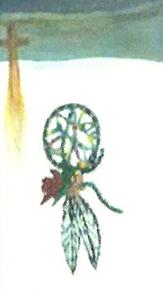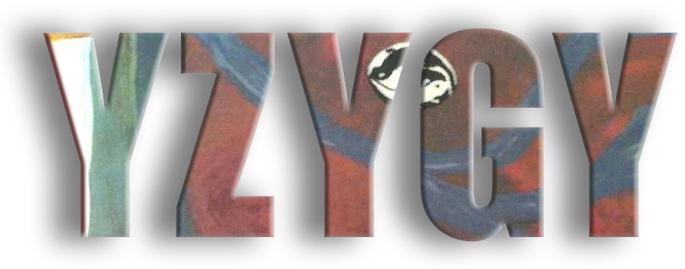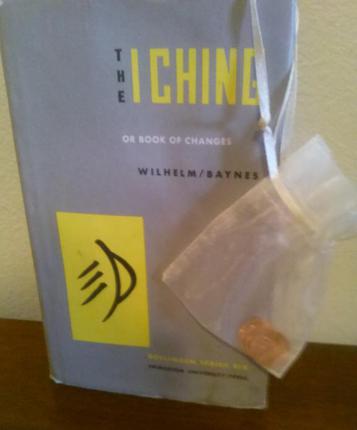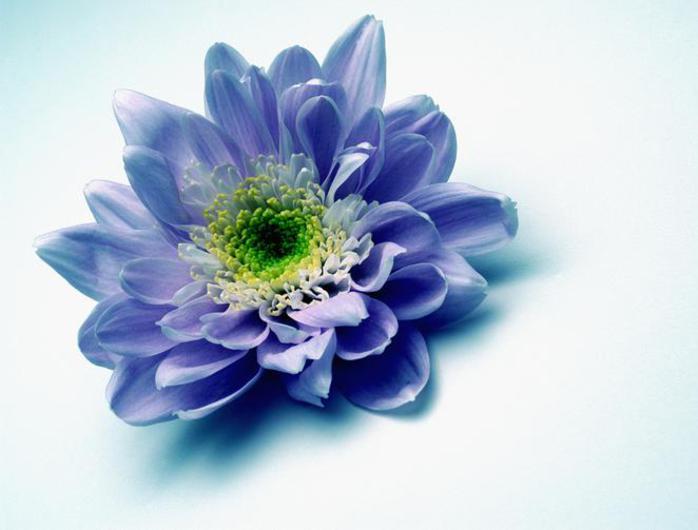MEMOIR LOGO CONCEPT: The aleph and a Sufi mystic inspired my creation and design of the syzygy logo, which I initially based on the symbolism of the yin and yang.
But the concept expanded when I first saw the aleph in Judith Cornell’s
Mandala Healing Kit, My inexplicable attraction to it led me to incorporate it into my logo before I knew what it meant.
I later read that the “Aleph (the first letter of the sacred Hebrew alphabet) embodies the primordial, divine potential of the universe. ... Aleph contains all the universe’s potential and all of its emptiness simultaneously. Aleph represents a dynamic process of movement from unity to diversity and back to unity,” Jennifer Judelsohn, Songs of Creation.
And the mystic poet Rumi inspired me to use the fire and water concept after I read The Question. Here is an excerpt:
“The presence is there in front of me. A fire on the left, a lovely stream on the right.
One group walks toward the fire, into the fire. Another toward the sweet flowing water.
No one knows which are blessed and which are not.
Whoever walks into the fire appears suddenly in the stream.
A head goes under water, and that head pokes out of the fire.”
LOGO ART: Cropped fire and water images from Free Images.
LOTUS LOGO: In spiritual and religious literature, “the lotus is a symbol for the macrocosm and the microcosm, the universe and man. The lotus represents the divinity of the cosmos as well as the divinity of man.
The lotus is the center of the infinite, omnipresent consciousness which connects with the consciousness of the universe. Through the intuition, one of man’s divine gifts, the spiritual student can see the infinite, omnipresent consciousness as the lotus flower within himself.”
LOTUS ART: Courtesy
Homestead, my website service provider. (Temporary art while I design of my own lotus logo.)
TO DOWNLOAD FREE SAMPLE CHAPTER OF SYZYGY:
THE MEMOIR
TO BUY MEMOIR
(Thru Amazon)
THE MEMOIR
CROSSING THE BRIDGE TO SELF
THE WEBSITE
THE MEMOIR
NEW!
“The I Ching is not magic; it is science that we don’t understand,” said Terence McKenna, who like Jung, was a life-time student of the I Ching. Another life-time student of the I Ching, James DeKorne, whose modern commentaries and interpretations have been a great source for me, sums up the I Ching as follows: “The metaphor used throughout [my study guide] is that of the Great Work of Transformation—a concept which describes the willed alteration of consciousness from a differentiated to a unified state, and which in various traditions has been called Individuation, The Path, The Tao, or simply: The Work.”
Me, though, I have only been studying the I Ching for a couple of years, just long enough to know I have so much more to learn. But it amazes me how accurately the I Ching depicts my situations—and future situations if I do not heed its words. A few years ago, two oracles, the I Ching and a friend’s dream, mirrored each other in such an unmistakable way that had I not heeded their warnings, I have no doubt I would have
been lost.
My sister Maggie, who lived 150 miles from me at the time, texted to say that her father-in-law, Murray, had died. Although I had known him for more than 40 years, our paths had seldomly crossed. And I had just finished my memoir the weekend before and was pumped up. There was still so much to do.
Maybe it was the right thing to do, to be with family at that time, but selfishly, I didn’t want a three-day trip to slow down my momentum. When my brother, who lived across town, texted me to see if I wanted to tag along with him and his wife to drive to my sister’s for the funeral, I was torn if I should go or not. He would be happy to wait till I got off work Friday evening if I wanted to go.
Before discussing the matter with him any further, I consulted the I Ching. Although I was very new to the Book of Changes—so new, actually, that I had no idea yet how little I knew—Hexagram 41 (Lines 3 and 4 in particular) resonated for me.
My Reading
SITUATION: Please give me guidance about attending Murray’s funeral.
Line 6: — —
Line 5: ——*
Line 4: ——*
Line 3: — —*
Line 2: ——
Line 1: ——*
ANSWER: Hexagram 41, Decrease, Lines 1, 3, 4, and 5. While the meaning of most of this hexagram went right over my head, the following text jumped out at me:
Line 1: Wilhelm/Baynes: Going quickly when one’s tasks are finished is without blame. But one must reflect on how much one may decrease others.
Line 3: Wilhelm/Baynes: When three people journey together, their number decreases by one. Blofeld: If three set forth together now, one will be lost on the way.
The I Ching is chiefly symbolic, but I have found that the hexagrams often reflect my situation on several levels simultaneously, sometimes metaphorically, spiritually, psychologically, and/or literally. And sometimes it addresses various outcomes as well, “if this then that,” making this ancient text prone to misinterpretation as well.
Therefore, when interpreting the hexagrams, take into account what makes sense to you, as well as what speaks to you intuitively. Look for synchronicities and signs that may confirm your interpretation. And most importantly, be mindful of your dreams, which can add crucial information to your readings, which happened in this case for me—not even in my dream, but in the dream of a close friend.
I Ching: An oracle—book of ethics, moral code
Of course, you can cast the I Ching using yarrow sticks or marbles or coins or even an app. I prefer marbles right now, and using candles sometimes adds a sense of ritual. I also find it invaluable to record all of my I Ching readings and dreams in the same electronic document to toggle between the two. But additionally, jotting my questions and key aspects of the answers in a special journal serves as a great little reference when I need a quick reminder or a review of recent readings.
C. G. Jung, Letters, August 24, 1960
PLEASE BE ADVISED
When I began working on this page, I thought I was going to instruct someone on how to consult the I Ching, but it just kept unraveling and kept getting bigger and bigger than me, and I began to realize just how complicated the I Ching is and how little I know about the subject. So I consulted the I Ching, and it agreed. It said I was fool to even try.
At this point in my development, I can only share my experiences. But it is up to you to decide what is right for you. As to consulting techniques, charts, and interpretations, there are multitudes of books and resources readily accessible in bookstores and on the Internet for anyone interested in further study.
Also I want to humbly apologize because, through this process, I realized that when I speak of the I Ching, I think I may give the mistaken impression that it is first and foremost a divination tool, when in fact it is so much more.
According to James DeKorne, who has spent decades studying it, the I Ching is a “profound psycho-spiritual system. One can live a full and moral life according to its principles without reservation. It was intended to be used for this purpose, and a frivolous ‘Ouija board,’ or party game attitude, is alien to its spirit.”
While I really like the Wilhelm/Baynes translation, I have found James DeKorne’s Gnostic Book of Changes, with its modern interpretations and commentaries on various translations, a fantastic resource for studying the I Ching.
As I said in my initial I Ching page, now archived, that considering my lack of knowledge about the I Ching when I built that page in April 2013, perhaps I should have led you to a page with the banner IN PRODUCTION. But then again, that is the point, the spirit, of this website: to show the process of individuation, its mistakes and all. So read this page, but know that an update (with new insight and corrections) is always in production.
The Next Morning
Before I made my final decision, my friend Della, who lived almost 1,800 miles away from me at the time and who could not possibly know anything about my current situation, texted me, asking me if I have a road trip planned. She said I should be extra careful if driving in the dark on curves and hills and stuff. She said she had dreamed the night before that I had gotten lost, not lost, per se, she texted again, just that I had disappeared and no one knew what happened to me. That night I called her, anxious to hear all the details of her dream. It was the strangest thing, she said, commenting on how she had not remembered any of her dreams for months.
Della’s Dream
Della was at a friend's house [who happened to be named Maggie] the night before a funeral, and the last time she had spoken to me I was on my way there to attend the funeral with them. They waited and waited for my arrival and called me numerous times with no answer, all the while her friend Maggie repeatedly saying that she [referring to me] was going to bleed to death.
When they got up the next morning to get ready to go to the funeral, Della’s friend Maggie had blood all over her, like a really bad menstruation, she said, and that one of my sisters (who she had never met), was there, and was inexplicably stoic and standoffish and unresponsive to Della’s efforts to hug her. Della worried that perhaps I had driven off the road or something because I still had not shown up.
My Conclusion
Of course, whether I was to be lost symbolically or literally or both if I went to the funeral I will never know, as I chose not to go.
But a quote from Chapter 4 of James DeKorne’s introduction to The Gnostic Book of Changes resonated for me then and now:
“The traditional vehicle of communication from the Self to the ego takes the form of dreams. These are, of course, vital to the Work and must always be monitored—the ego cannot afford to be unaware of any information emerging from the psyche. Suffice it to say that what Jungians call ‘the symbolic life’ is the template for the individuation process, and the symbolism of the oracle and the symbolism of dreams both reflect the same inner reality.”
© 1955–2015 Syzygy: Crossing the Bridge to Self. All Rights Reserved.
“... The I Ching consists of readable archetypes, and it very often presents not only a picture of the actual situation but also of the future, exactly like a dream. One could even define the I Ching oracle as an experimental dream.”
THE “POLARIZNG” ISSUE OF GENDER IN THE I CHING
The gender terms “masculine” and “feminine” are loaded with bias, passed down from a long and predominantly patriarchal era. Taking my cue from James DeKorne, who compiled and compared several translations of the I Ching dating as far back as the ancient philosopher Confucius up to 20th century scholars, I am going to presume that as “enlightened moderns we perceive that sexually prejudiced attitudes are as illogical as having a ‘preference’ for one over the other pole in an electrical circuit.”
In Chapter 1 of his work, The Gnostic Book of Changes, DeKorne emphasizes the importance of interpreting archaic texts symbolically rather than literally. “In order to evoke and emphasize an unbiased polarity in the lines of the hexagrams,” he said, “I have altered the original text to the extent of identifying each line as either ‘dynamic’ or ‘magnetic.’ This nomenclature is taken from the philosophy of Actualism, as developed by Russell Schofield and described by Ralph Metzner in his book Know Your Type: Maps of Identity (1979).”
In my view, DeKorne’s conclusion to Chapter 1 of his work expands the concept of gender and catapults it from a personal, polarizing bias to an all-encompassing universal view in which neither polarity can exist without the other: “In a broader sense, the dynamic aspect of consciousness is functional and the magnetic is structural. Function moves through structure, and is given body or form by structure…. An unstructured dynamic expression is random and incoherent; a magnetic without dynamic function is an empty and powerless structure.”
“The symbolism of the oracle and the symbolism of dreams both reflect the same inner reality.”












